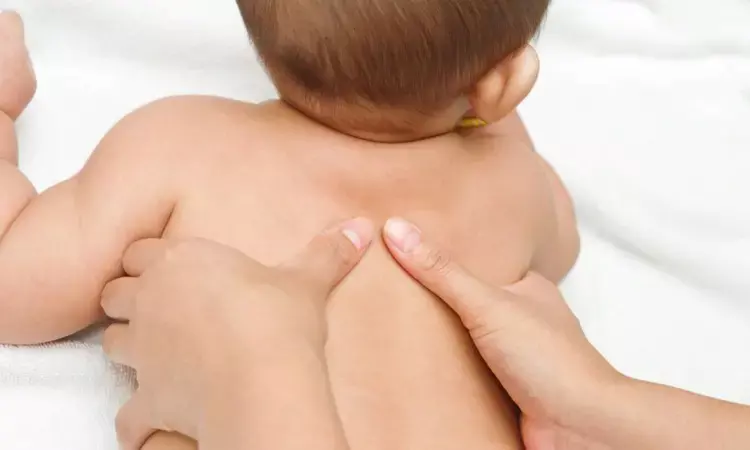- Home
- Medical news & Guidelines
- Anesthesiology
- Cardiology and CTVS
- Critical Care
- Dentistry
- Dermatology
- Diabetes and Endocrinology
- ENT
- Gastroenterology
- Medicine
- Nephrology
- Neurology
- Obstretics-Gynaecology
- Oncology
- Ophthalmology
- Orthopaedics
- Pediatrics-Neonatology
- Psychiatry
- Pulmonology
- Radiology
- Surgery
- Urology
- Laboratory Medicine
- Diet
- Nursing
- Paramedical
- Physiotherapy
- Health news
- Fact Check
- Bone Health Fact Check
- Brain Health Fact Check
- Cancer Related Fact Check
- Child Care Fact Check
- Dental and oral health fact check
- Diabetes and metabolic health fact check
- Diet and Nutrition Fact Check
- Eye and ENT Care Fact Check
- Fitness fact check
- Gut health fact check
- Heart health fact check
- Kidney health fact check
- Medical education fact check
- Men's health fact check
- Respiratory fact check
- Skin and hair care fact check
- Vaccine and Immunization fact check
- Women's health fact check
- AYUSH
- State News
- Andaman and Nicobar Islands
- Andhra Pradesh
- Arunachal Pradesh
- Assam
- Bihar
- Chandigarh
- Chattisgarh
- Dadra and Nagar Haveli
- Daman and Diu
- Delhi
- Goa
- Gujarat
- Haryana
- Himachal Pradesh
- Jammu & Kashmir
- Jharkhand
- Karnataka
- Kerala
- Ladakh
- Lakshadweep
- Madhya Pradesh
- Maharashtra
- Manipur
- Meghalaya
- Mizoram
- Nagaland
- Odisha
- Puducherry
- Punjab
- Rajasthan
- Sikkim
- Tamil Nadu
- Telangana
- Tripura
- Uttar Pradesh
- Uttrakhand
- West Bengal
- Medical Education
- Industry
New prediction tool decreases imaging use, improves diagnosis among kids with cervical spine injury: JAMA

USA: A cohort study of 128 with cervical spine injury (CSI) showed variability in radiographic use, including increased use of MRI (magnetic resonance imaging) and subsequent diagnosis of ligamentous injury. This has implications of increased radiation exposure, increased cost, and a potential for overdiagnosis.
The researchers created a new prediction tool to help predict CSI. This could help to decrease the use of imaging, decrease hospital resource use and cost, and aid in clinical decision-making. The findings from the PEDSPINE II Study were published in the journal JAMA Surgery on September 13, 2023.
The incidence of pediatric cervical spine injury following blunt trauma is 0.6% to 2%. The clearance of the cervical spine may be difficult for the youngest trauma patients, those younger than 3 years because patients can be nonverbal or nonparticipatory in the trauma evaluation. However, in pediatric patients, there is variability in practice and imaging use for CSI diagnosis following blunt trauma.
Casey M. Luckhurst, Emergency Surgery, and Surgical Critical Care, Massachusetts General Hospital, Boston, and colleagues therefore aimed to develop a prediction model to guide imaging usage and to identify trends in imaging and evaluate the PEDSPINE model.
The cohort study included pediatric patients below 3 years following blunt trauma between 2007 and 2017. From 22 centres in PEDSPINE, 15 centres were included that comprised level 1 and 2 stand-alone pediatric hospitals, level 1 and 2 pediatric hospitals within an adult hospital, and level 1 adult hospitals. Patients who diet before obtaining cervical spine imaging were excluded.
Descriptive analysis was performed to describe the population injury patterns and the use of imaging. PEDSPINE model validation was performed. A new algorithm was derived using clinical criteria and the formulation of a multiclass classification problem.
The study's primary outcome was determined as cervical spine injury. The primary and secondary objectives were predetermined.
The authors reported the following findings:
- PEDSPINE II included 9389 patients, of which 1.36% had CSI, twice the rate in PEDSPINE (0.66%). The mean age was 1.3 years, and 54.7% were male.
- 80% of the children underwent cervical spine imaging, compared with 63% in PEDSPINE. Several candidate models were fitted for the multiclass classification problem.
- After comparative analysis, the multinomial regression model was chosen with the one-vs-rest area under the curve (AUC) of 0.903 and was able to discriminate between bony and ligamentous injury.
- PEDSPINE and PEDSPINE II models’ ability to identify CSI were compared.
- In predicting the presence of any injury, PEDSPINE II obtained a one-vs-rest AUC of 0.885, outperforming the PEDSPINE score (AUC, 0.845).
The researchers noted that while there is no substitute for clinical judgment in the acute setting, this prediction tool has the potential to help decrease imaging use, aid in clinical decision-making, and reduce hospital resource utilization and cost.
Reference:
Luckhurst CM, Wiberg HM, Brown RL, et al. Pediatric Cervical Spine Injury Following Blunt Trauma in Children Younger Than 3 Years: The PEDSPINE II Study. JAMA Surg. Published online September 13, 2023. doi:10.1001/jamasurg.2023.4213
Dr Kamal Kant Kohli-MBBS, DTCD- a chest specialist with more than 30 years of practice and a flair for writing clinical articles, Dr Kamal Kant Kohli joined Medical Dialogues as a Chief Editor of Medical News. Besides writing articles, as an editor, he proofreads and verifies all the medical content published on Medical Dialogues including those coming from journals, studies,medical conferences,guidelines etc. Email: drkohli@medicaldialogues.in. Contact no. 011-43720751


